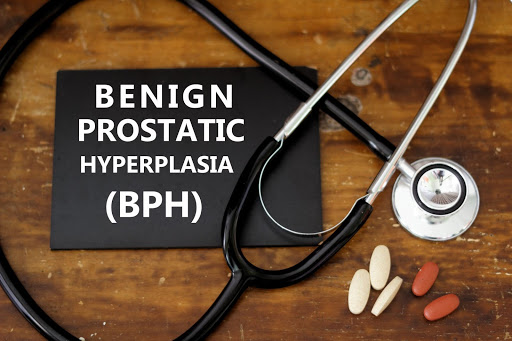There’s good news for men with an enlarged prostate. KCUC Urology and Oncology is offering a non-surgical treatment on an outpatient basis. It’s called UroLift and it has a lot of advantages over medication, other procedures, or surgery.
An Enlarged Prostate Is Very Common
An enlarged prostate, or BPH (Benign Prostatic Hyperplasia), is a very common problem in men over 50. In the US, BPH affects 75% of men over 50 and 80% of men over 70. The prostate, a walnut-sized gland located below the bladder and surrounding the urethra (the tube used to urinate) tends to keep growing as men age. Because it surrounds the urethra, it causes urinary problems (frequent urination, urgency, slow stream, incomplete emptying, and embarrassing leaking) which can impair a man’s quality of life.
How Does UroLift Work?
Doctors insert an implant delivery device through a camera in the urethra. This device is used to move the obstructive prostate tissue aside. Then a nylon suture with a tab at each end is implanted to hold the tissue back. Depending on the blockage severity, four to seven implants are placed into the prostate. These permanent implants hold the prostate tissue out of the way so it no longer blocks the urethra – much the same way tiebacks hold window curtains back. With the prostate tissue out of the way, urine can now flow freely. Unlike other procedures or surgery, the UroLift procedure requires no cutting, heating or tissue removal. Most men will not need a catheter after the procedure. It’s a simple mechanical answer to a mechanical problem. If you prefer, you can watch a video explanation.
Very Few Side Effects
Until UroLift, men’s choices were limited to medication or more invasive procedures (prostate resection, laser prostate ablation) or surgery which removed or destroyed tissue. These can cause side effects that aren’t desirable. The really good news is that UroLift avoids erectile and ejaculatory dysfunction. Patient experiences may vary, but UroLift caused only mild to moderate side effects in most men and those symptoms were gone in 2-4 weeks.
Benefits of UroLift
- One-time, office outpatient procedure
- Results are immediate
- Minimally invasive
- Fast recovery
- Mild to moderate side effects
- Minimal downtime
- Procedure takes about 15 minutes
- Effective in about 90% of patients
- 90% of men will not need a catheter after the procedure
- No tissue removed or destroyed
Risks of UroLift
Infection and bleeding are general risks of any minimally invasive procedure. There is a small chance that it may be less effective than hoped for to relieve symptoms. UroLift is relatively new (FDA cleared in 2013), so long-term results are unknown. But five years of clinical data on hundreds of patients show consistent results and durable relief from the symptoms of BPH. The procedure is best for those with moderate-sized prostate glands. It is less well suited to those with very large glands, small glands, or median lobes (prostate extension into the bladder).
If you’d like to learn more about the minimally invasive UroLift procedure, visit our website at www.kcuc.com and schedule an appointment to speak with a urologist. At KCUC, you see the best in KC.

